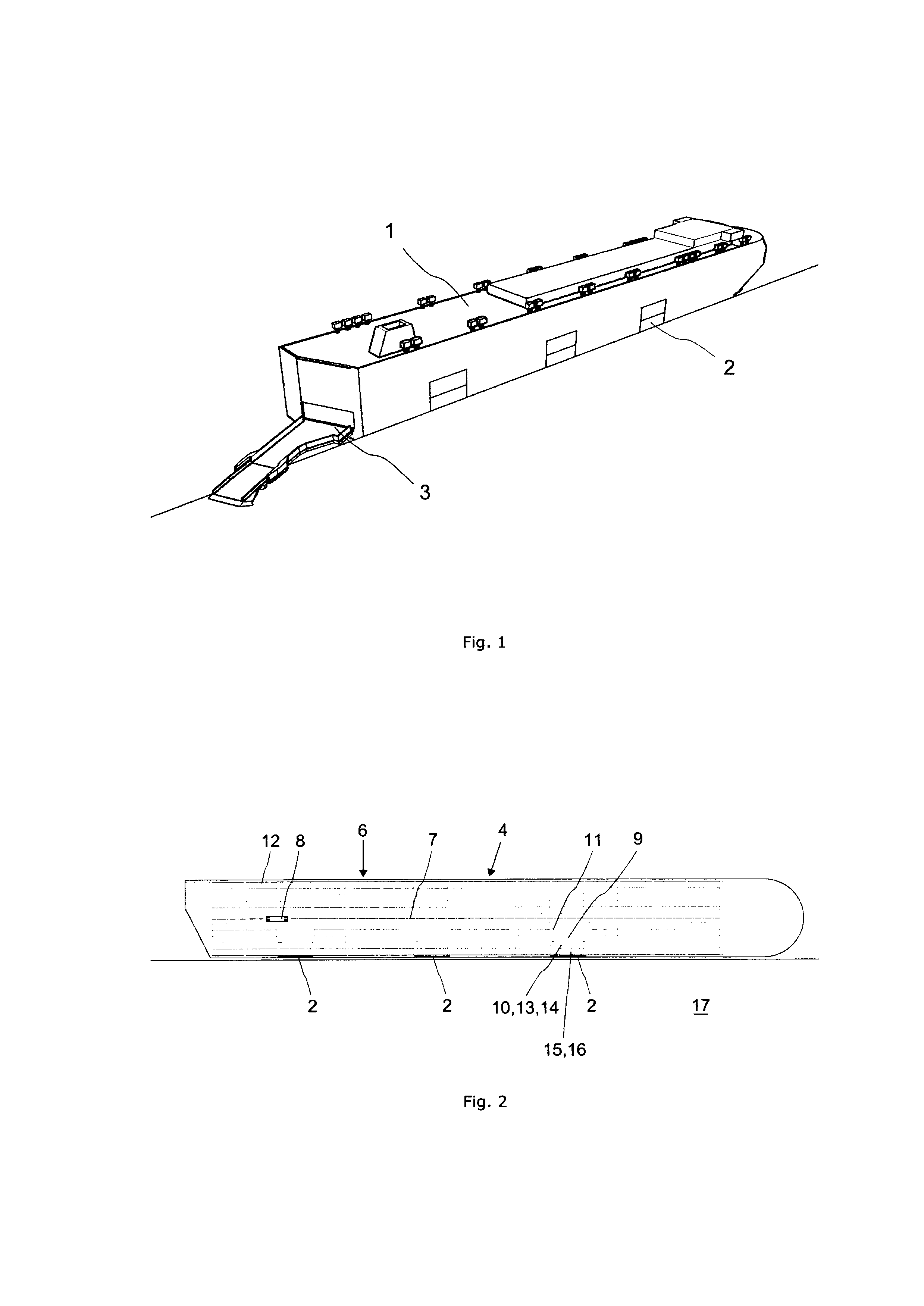System for handling cargo
- Summary
- Abstract
- Description
- Claims
- Application Information
AI Technical Summary
Benefits of technology
Problems solved by technology
Method used
Image
Examples
Embodiment Construction
[0028]The invention relates to a system for handling cargo on a cargo vessel and between vessel and quay. The system includes three elements: the cargo vessel, a load platform for storing goods, and a special trolley for transporting the load platforms.
[0029]FIG. 1 shows a cargo vessel 1 according to the present invention. The vessel includes a number of decks, of which one, the main deck, is accessible through a number of side doors 2. All decks communicate by means of cargo elevators. In addition, there is an aft ramp 3 that folds down onto the pier giving access for cargo that cannot be mounted on standard size load platforms and for Ro Ro cargo. The aft ramp gives access to a particular reinforced deck that can support heavy goods.
[0030]FIG. 2 shows the main deck 4 in plane view. Cargo is located on load platforms 12 (to be described later) that are placed in short slots 6 transverse to the longitudinal axis of the ship, and with a central passageway 7. The load platforms are ha...
PUM
 Login to View More
Login to View More Abstract
Description
Claims
Application Information
 Login to View More
Login to View More - R&D
- Intellectual Property
- Life Sciences
- Materials
- Tech Scout
- Unparalleled Data Quality
- Higher Quality Content
- 60% Fewer Hallucinations
Browse by: Latest US Patents, China's latest patents, Technical Efficacy Thesaurus, Application Domain, Technology Topic, Popular Technical Reports.
© 2025 PatSnap. All rights reserved.Legal|Privacy policy|Modern Slavery Act Transparency Statement|Sitemap|About US| Contact US: help@patsnap.com



